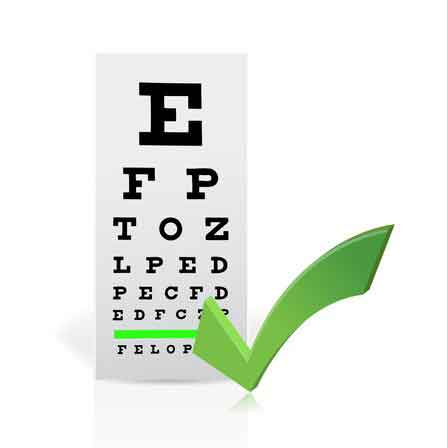When Patients Cross Borders to Get Medication
|
Reading time: 6 minutes
|

It’s a wide known fact – prescription medication in the United States is expensive. So costly that in comparison to other wealthy nations around the world such as Germany or Japan, the gap between prices for a similar drug can be very obvious and steep. This is true especially for newer drugs or those medications that have just recently been released into the market.
Because of this, many Americans end up suffering because they fail to adhere to their treatment regimen. In fact, an estimated 35 million people all across the country end up skipping or splitting doses or completely forgoing on medication because of financial constraints. Unfortunately, it’s usually senior citizens and low-income earners who bear the brunt of this predicament.
The problem doesn’t stop there. Non-adherence to medication brings out other health issues, which cost about $290 billion in health care services. These additional health problems are definitely that could have been avoided if patients had the access to more medication in the first place.
What’s Happening Now?
To access medication, millions of Americans purchase drugs outside the country, specifically from Canada. These purchases are either made in person, with individuals or families actually travelling across the border, or by buying online and having the medicines shipped back home. For many people, doing so becomes the most viable option because it allows them to fill their prescription at an affordable price.
What most people don’t know, however, is that it’s considered illegal to import prescription drugs into the county – except for very rare instances. This practice sits in the gray area, with the FDA not tending to prosecute people who purchase drugs, especially for personal use or for amounts that are good for a few month’s supply.
While this practice being overlooked – and thus allowing many people to make purchases – the problem now lies in keeping consumers safe when they do. Currently, there is no legislation on consumer safety and protection when importing drugs, specifically from Canada. While the FDA has a Personal Importation Policy, it only applies to specific situations – such as when a certain drug is unapproved in the country and is intended for a very serious condition, or if the drug is not commercialized in the country.
It can’t, however, be used to purchase cheaper version of FDA-approved drugs, which is exactly what millions of people need.
What Can You Do?
There are advocacy groups, such as The Campaign for Personal Prescription Importation (CCPI), that understand this situation. They understand the need for millions to procure prescription medication from outside the country, and with the local prices of drugs, personal importation is still the most feasible option for many, and the only way to go is to ensure that those who do are protected by being allowed full access to licensed Canadian pharmacies.
Gathering patients and consumers, the CCPI serves as a collective voice for Americans to ensure that everyone gets access to safe and effective medication, and they do this by contacting members of congress, maintaining strong presences in town hall meetings, campaign rallies and events where legislators are.
To find out more about CPPI and get involved, visit personalimportation.org.
Six Tips For Healthy Eyes and Better Vision

There’s probably no need to list down reasons why you should keep your eyes healthy – after all, it’s one sense you definitely do not want to lose. For most people, it’s easy to take the eyes for granted, especially when you’re seeing well and don’t feel anything wrong. Most of the time, a trip to the eye doctor only occurs when there’s a problem already, and often times it can be too late.
Luckily, there are many things that you can do to prevent eye disease, and here are a few tips that you can follow should you wish to take more proactive steps towards your eye health.
1. Visit your eye doctor – regularly
Your vision might seem fine, but regular comprehensive dilated eye exams are the only way to make sure that there are no problems. This is also important because common eye diseases such as age-related macular degeneration, diabetic eye disease and glaucoma don’t often have warning signs. Regular eye exams are the only way to detect these conditions in their early stages.
2. Be on the lookout for changes in your vision
Once you start noticing changes in your vision, get in touch with your eye doctor right away. Some changes to look out for include difficulty seeing in low light, double vision, hazy vision, flashes of light and floaters. These are signs of potential eye problems, which may need immediate attention.
3. Eat well
Your food choices also play an important role in eye health, since nutrients like lutein, omega-3 fatty acid and vitamins such as C and E can work wonders to ward off age-related problems like cataracts and macular degeneration. To keep your eyes healthy, fill up your plate with foods like green, leafy vegetables, oily fish such as salmon and tuna, protein-sources like eggs, nuts and beans and citrus fruits. Eating healthy also keeps weight off, which may prevent diabetes and diabetes-related eye disease.
4. Quit smoking – or don’t start at all
Smoking is bad for the eyes, just as it’s bad for the rest of the body. Research links smoking to an increased risk in developing cataracts and optic nerve damage, all of which can lead to blindness.
5. Wear sunglasses
Exposure to ultraviolet rays can easily damage your eyes, making you more likely to get cataracts. Make it a point to wear sunglasses when out in the sun. The best sunglasses are those that block out 99% to 100% of UVA and UVB rays, and if you want extra protection, choose wraparound glasses to protect your eyes on all sides.
6. Exercise regularly
Regular exercise – even as simple as walking – can reduce the risk of certain eye conditions, specifically age-related macular degeneration by up to 70%.
The tips mentioned above are fairly easy to follow, and should help you in your efforts to prevent eye problems. Aside from these, make sure that you wear safety glasses when using tools or taking part in active sports to prevent potential eye injuries.
It’s important to note that following these steps will not guarantee you 20/20 vision throughout your lifetime, but taking precautionary measures and maintaining a healthy lifestyle will definitely decrease your chances of developing eye problems that you can easily prevent.
Information provided on this website is for general purposes only. It is not intended to take the place of advice from your practitioner







